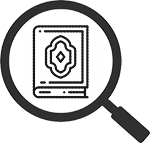
Intertextual Connections Between the Qur’an and Other Texts/Traditions
One of the striking features of the Qur’an is the extensive connections it has to other religious traditions from Late Antiquity and earlier, especially Jewish and Christian traditions (both scriptural and apocryphal):
According to Faruq Sherif, approximately one-fourth of the Qur’ān’s verses are concerned with narratives of prophets or other figures from Jewish and Christian tradition. 1
Qur’an Tools contains a growing database of what we have termed intertextual connections found in the Qur’an, along with a number of tools to make it easy to study them. Whilst there are a number of scholarly theories concerning how this material found its way into the Qur’an, Qur’an Tools is simply concerned with recording the connections, making them easy to discover, and equally easy to explore.
There are several ways you can begin to explore the Qur’an’s intertextual connections ...
First, you can study intertextual connections right in the verse browser ...
Open a verse in the verse browser and point your cursor at it. The verse tools palette will appear:

If there are intertextual connections for this verse, click the
 icon to list them:
icon to list them:

Click the "View Passage" button to view the relevant passage from an intertextual connection (or click "View Entire Source" to view the entire text/document in a separate browser window or tab). You can also click the
 icon to browse all the intertextually connected sources known to Qur’an Tools for the entire Qur’an, or the
icon to browse all the intertextually connected sources known to Qur’an Tools for the entire Qur’an, or the ![]() icon to explore them as a chart.
icon to explore them as a chart.
Second, you can easily search for verses with intertextual connections ...
Simply type INTERTEXTS>0 into the search box on the home page:

Third, you can quickly browse all the sources linked intertextually to the Qur’an ...
Qur’an Tools will then show a list of all the sources/texts/documents it knows of, along with where there are connections to them in the Qur’an.

Fourth, you can explore intertextuality as a chart ...
Just choose "Intertextuality" from the "Charts" menu and then decide whether you want to see a chart of every source/document and the number of times it has links, or the number of intertextual connections per sura. The former chart type looks like this:

1 Gabriel Said Reynolds, The Qur’ān and the Bible: Text and Commentary (New Haven: Yale University Press, 2018) p2

